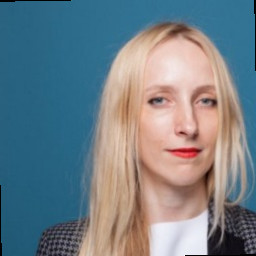Elena, how was the Experience Index received? What feedback did you get?
We launched the Experience Index with the aim of making a user centricity barometer available to ENGIE Digital, but also to all of the Group's digital products. To do this, users could self-assess their projects by answering around 50 questions. They obtained a final maturity score in terms of user centricity. The questionnaire could be completed by one person or by the entire team.
Gradually, we had about ten projects evaluated, and we interviewed some users to get their feedback on the tool. We became aware of certain problems and areas for improvement. In the Group, there are a large number of digital projects, of varying size and complexity, with very different needs and this feedback has enabled us to make initial improvements.
On this first version, we evaluated around thirty projects, half of which were outside ENGIE Digital. Over the summer, we decided to evolve the Experience Index and completely overhaul it. We considered the first release as a sort of MVP, and decided to apply our own product design methods for the new release.
Fake it until you make it
The main complaints about the 1st version related to the number of questions and their complexity. We assembled a panel of user-testers and shared ideas for improvement with them. In the design method approach, a panel of 5 users can identify up to 95% of qualitative problems. We have set up a test protocol, models with different evolution options. One of the design principles is “Fake it until you make it”, so rather than investing a lot of time and money in a new version, we have developed simple and almost operational models on free online questionnaires.
A 1st wave of tests allowed us to identify the immersive experience that was expected by our users, then their preferences in terms of navigation. We detected a sticking point in the questionnaire that led to massive dropouts. When a first user completed the quiz, he got an overall score with low detail, and had the option of either inviting other members of his team or closing the test to get detailed results. Obviously this step was not understood and most users stopped there. The result was doubly frustrating, because not only did they not have access to all the information we had for them, but also because they found the result unattractive given the time taken to fill the questionnaire.
The second phase of testing focused on content and comprehension, this time with around ten testers.
We then called on our in-house interactive designers to develop the graphical interface and stage the flow of questions and interactions.
We decided to completely change the look and feel, switching from a fairly classic white background to a dark background, to stay in the "Dark is the new green" trend which visually matches the Group's strategy. We changed the way we navigate between questions, and finally, we changed the way results are displayed. Instead of offering a lot of advice on many topics, we have chosen to focus on the 3 most important points. These 3 tips can possibly be further developed by documents that we make available and that we continue to enrich over time.
Our goal is not to allow everyone to improvise as a designer, but to show all our stakeholders at ENGIE how design makes it possible to achieve user centricity in products, which is now a real differentiator.
Design isn't just for digital products.
In these first versions, we focused on digital products, but in the next versions we have the ambition to open up to all kinds of other products! We would eventually like to open the Experience Index to projects outside ENGIE.
And of course, we will be asking the 30 projects tested in the 1st version to come back and use the new one and use their feedback to improve even further.


